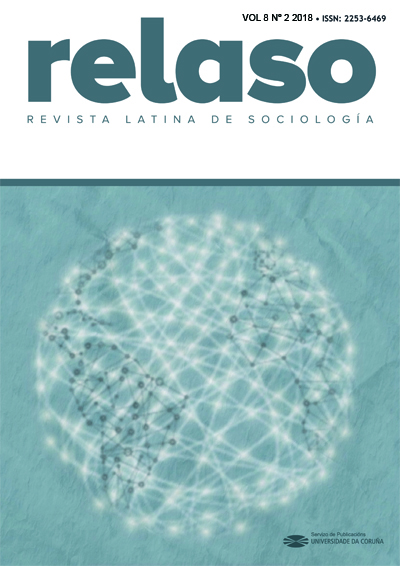Entre Huxley y Orwell: Big Data y salud
Contenido principal del artículo
Resumen
Cuando en el año 1966 Naciones Unidas planteaba en su Declaración Internacional de los Derechos Civiles y Políticos, el ideal de un ser humano libre con respeto a su intimidad a través de la prohibición de injerencias arbitrarias en su vida privada, no era posible imaginar el impacto global que tendría la irrupción de una conectividad casi ilimitada, la autonomía de las nuevas tecnologías de la información, el desarrollo de enormes bases de datos interconectadas, la circulación independiente e irrestricta de datos, que han generado interrogantes éticos y jurídicos derivados de esta forma de tratar los datos personales y de salud.
Palabras clave:
Descargas
Métricas
Detalles del artículo
Citas
Anema A, Kluberg S, Wilson K, Hogg RS, Khan K, Hay SI, Brownstein JS (2014). Digital surveillance for enhanced detection and response to outbreaks. The Lancet. Infectious Diseases, 14(11), 1035–1037. http://doi.org/10.1016/S1473-3099(14)70953-3.
Balas EA, Vernon M, Magrabi F, Gordon LT, Sexton J. (2015). Big Data Clinical Research: Validity, Ethics, and Regulation. Stud Health Technol Inform, 216:448-452.
Beck EJ, Gill W, De Lay PR. (2016). Protecting the confidentiality and security of personal health information in low- and middle-income countries in the era of SDGs and Big Data. Glob Health Action, 9:32089. http://doi.org/10.3402/gha.v9.32089.
Bobbio N. (1982). El problema de la guerra y las vías de la paz. GEDISA.
Consejo de Europa. (1981). Convenio para la Protección de las Personas con Respecto al Tratamiento Automatizado de Datos de Carácter Personal, y Protocolo Adicional 200, Recuperado de http://www.oas.org/es/sla/ddi/docs/U12%20convenio%20n%20108.pdf
De Moor G, Sundgren M, Kalra D, Schmidt A, Dugas M, et al. (2015). Using electronic health records for clinical research: the case of the EHR4CR project. J Biomed Inform. Feb; 53:162-73. http://doi.org/10.1016/j.jbi.2014.10.006. Epub 2014 Oct 18.
Ginsberg J, Mohebbi MH, Patel RS, Brammer L, Smolinski MS, Brilliant L. (2009). Detecting influenza epidemics using search engine query data. Nature, 457:1012-1014
Gostin LO, Nass S. (2009). Reforming the HIPAA privacy rule: safeguarding privacy and promoting research. JAMA, 301(13):1373–1375
Gruebner O, Sykora M, Lowe SR, Shankardass K, Galea S, Subramanian SV. (2017). Big data opportunities for social behavioral and mental health research. Soc Sci Med, Jul 22, pii: S0277-9536(17)30451-3. http://doi.org/10.1016/j.socscimed.2017.07.0-
Kaplan B. (2016). How should health data be used? Camb Q Healthc Ethics. 25(2):312-329. http://doi.org/10.1017/S0963180115000614
Kaplan B. (2015). Selling health data: de-identification, privacy, and speech. Camb Q Healthc Ethics, 24(3):256-271. http://doi.org/10.1017/S0963180114000589
Llàcer MR, Casado M,. Guisan L (coords.) (2015). Barcelona, Bioética y Big Data de salud: explotación y comercialización de los datos de los usuarios de la sanidad pública. en http://www.bioéticayderecho.ub.edu/publicaciones/documentos
Martin KE. (2015). Ethical issues in the big data industry. MIS Quarterly Executive 14(2): 67-85.
Mashey J. (2017). Big data and the next wave of infrastress. Recuperado de https://www.usenix.org/legacy/publications/library/proceedings/usenix99/invited_talks/mashey.pdf
Mayer-Schönberger V, Cukier K. (2014.). Big Data: a revolution that will transform how we live, work and think. Mariner Books; Boston.
Mittelstadt BD, Floridi L, (2016). The Ethics of Big Data: Current and Foreseeable Issues in Biomedical Contexts, Science and Engineering Ethics, 22, 2, 303
OMS (2013). Plan de Acción Integral sobre Salud Mental 2013/2020 Recuperado de http://www.apps.who.int/iris/bitstream/10665/97488/1/9789243506029_spa.pdf
Polgreen PM, Chen Y, Pennock DM, Nelson FD. (2008). Using Internet searches for influenza surveillance. Clin Infect Dis, 47:1443-1448
Unión Europea (2016). Reglamento (UE) 2016/679 Parlamento europeo y Consejo, Relativo a la Protección de las Personas Físicas en lo que Respecta al Tratamiento de Datos Personales y a la Libre Circulación de estos Datos, Recuperado de http://www.eur-lex.europa.eu/legal-content/ES/TXT/?uri=CELEX%3A32016R0679
Rodwin MA. (2009). The case for public ownership of patient data. JAMA, 302(1):86–88
Rothstein MA. (2015).Ethical issues in big data health research: Currents in contemporary bioethics. J Law Med Ethics, 43(2):425-429. http://doi.org/10.1111/jlme.12258
Rothstein MA. (2010). The Hippocratic Bargain and Health Information Technology. The Journal of law, medicine & ethics: a journal of the American Society of Law, Medicine & Ethics, 38(1):7-13. http://doi.org/10.1111j.1748-720X.2010.00460.x.
Tribunal Constitucional de España. (2000). Sentencia 292/2000 de 30 de noviembre ECLIS:ES:TC: 2000:292, Recuperado de http://www.hj.tribunalconstitucional.es/HJ/cs-CZ/Resolucion/Show/SENTENCIA/2000/292
Vayena E, Salathé M, Madoff LC, Brownstein JS. (2015). Ethical challenges of big data in public health. PLoS Comput Biol, 11(2): e1003904. http://doi.org/10.1371/journal.pcbi.1003904
Velasco E, Agheneza T, Denecke K, Kirchner G, Eckmanns T. (2014). Social media and Internet-based data in global systems for public health surveillance: a systematic review. Milbank Q 92: 7–33. http://doi.org/10.1111/1468-0009.12038
Zook M, Barocas S, Boyd D, Crawford K, Keller E, Gangadharan SP, et al. (2017). Ten simple rules for responsible big data research. PLoS Comput Biol, 13(3):e1005399. http://doi.org/10.1371/journal.pcbi.1005399


